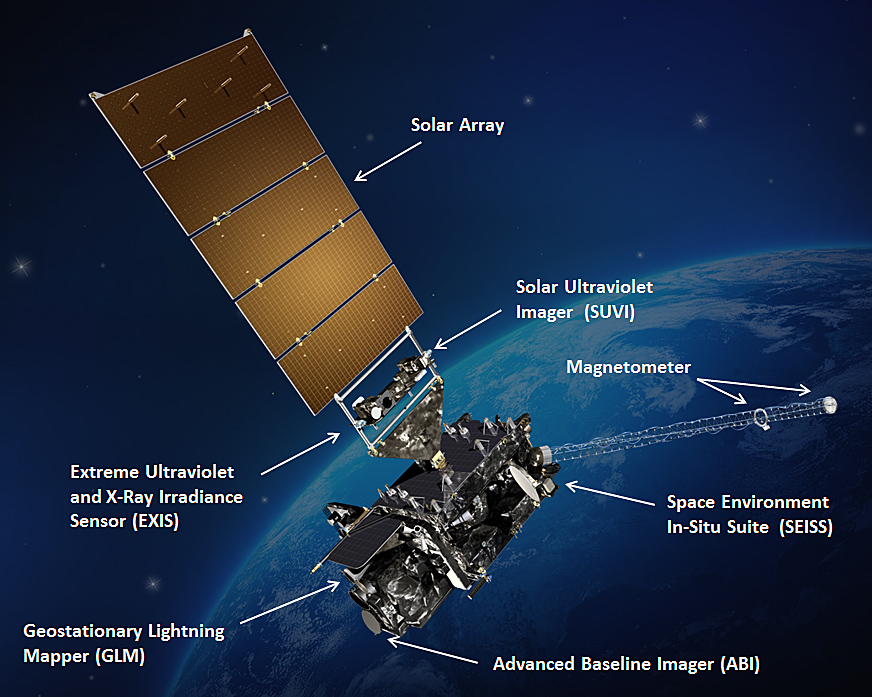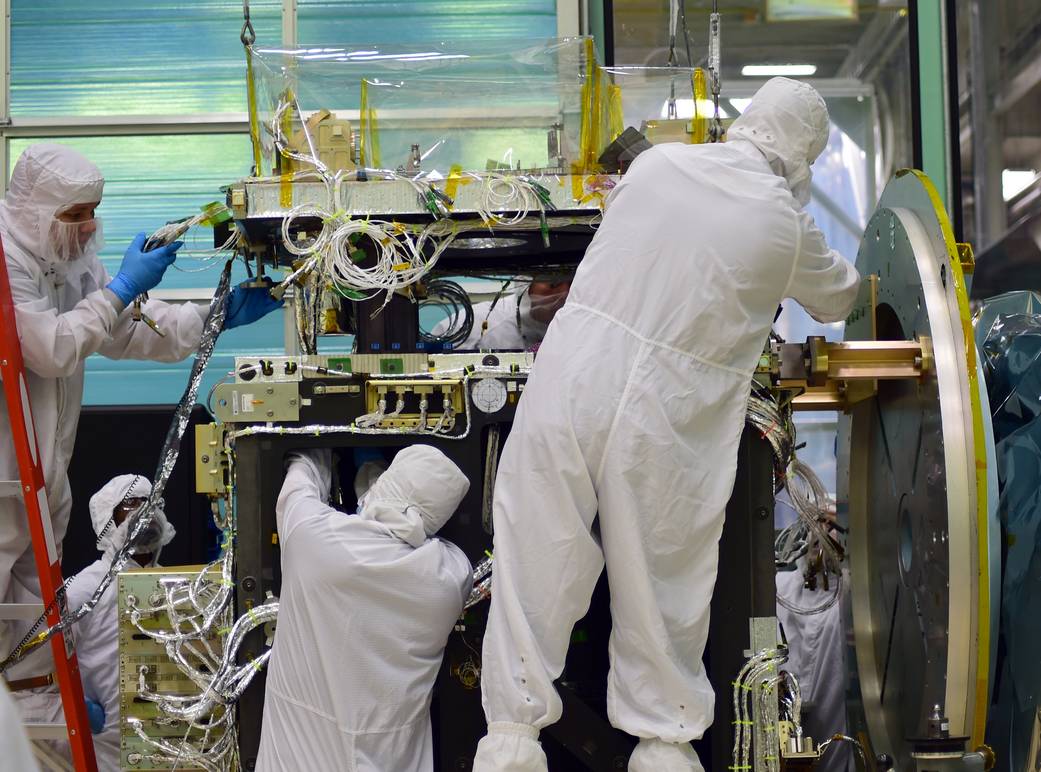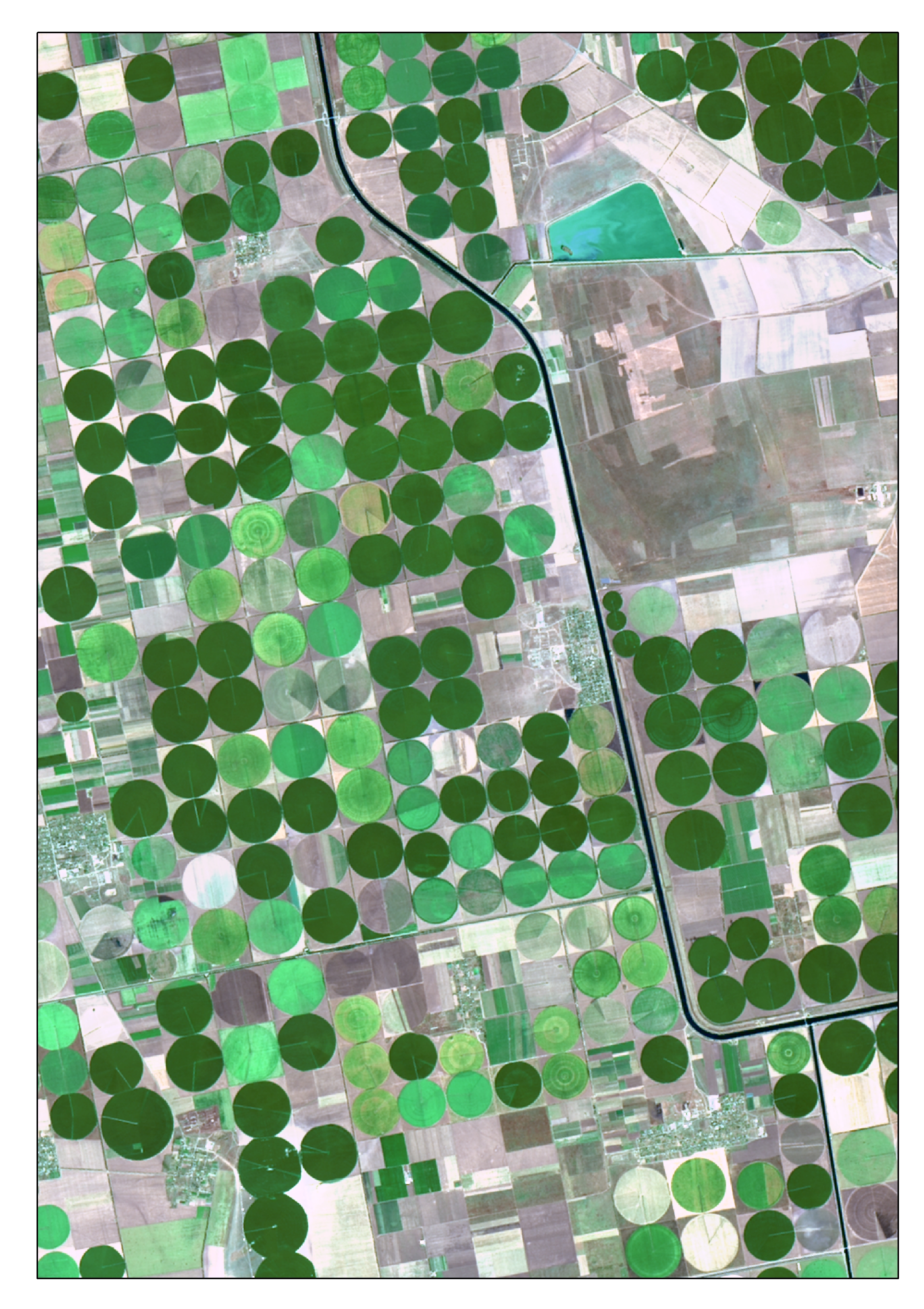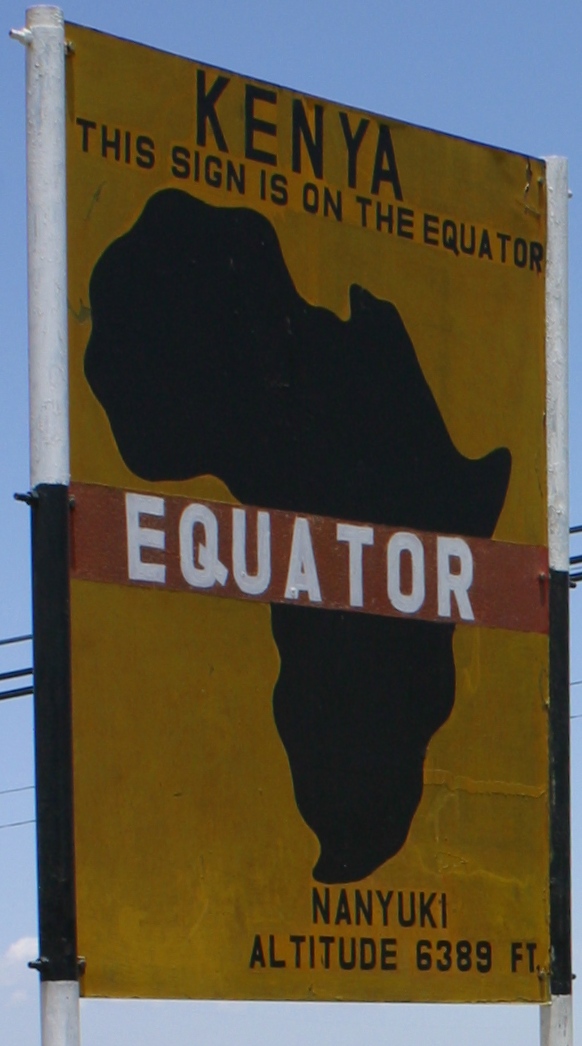|
NOAA-21
NOAA-21, designated JPSS-2 prior to launch, is the second of the United States National Oceanic and Atmospheric Administration (NOAA)'s latest generation of U.S. polar-orbiting, non-geosynchronous, environmental satellites called the Joint Polar Satellite System. NOAA-21 was launched on 10 November 2022 and join NOAA-20 and Suomi NPP in the same orbit. Circling the Earth from pole-to-pole, it will cross the equator about 14 times daily, providing full global coverage twice a day. NOAA-21 will provide operational continuity of satellite-based observations and products for NOAA Polar-Orbiting Environmental Satellites (POES) and Suomi NPP satellite and ground systems. The baseline plan for JPSS Ground System will be sustained to support NOAA-21, similar to NOAA-20. NOAA-21 hosts the following instruments: 1) VIIRS, 2) CrIS, 3) ATMS, and 4) OMPS. It was at one time intended to carry the Radiation Budget Instrument (RBI) but NASA cancelled that project in 2018. Development On 24 ... [...More Info...] [...Related Items...] OR: [Wikipedia] [Google] [Baidu] |
Joint Polar Satellite System
The Joint Polar Satellite System (JPSS) is the latest generation of U.S. polar-orbiting, non-geosynchronous, environmental satellites. JPSS will provide the global environmental data used in numerical weather prediction models for forecasts, and scientific data used for climate monitoring. JPSS will aid in fulfilling the mission of the U.S. National Oceanic and Atmospheric Administration (NOAA), an agency of the Department of Commerce. Data and imagery obtained from the JPSS will increase timeliness and accuracy of public warnings and forecasts of climate and weather events, thus reducing the potential loss of human life and property and advancing the national economy. The JPSS is developed by the National Aeronautics and Space Administration (NASA) for the National Oceanic and Atmospheric Administration (NOAA), who is responsible for operation of JPSS. Three to five satellites are planned for the JPSS constellation of satellites. JPSS satellites will be flown, and the scientific ... [...More Info...] [...Related Items...] OR: [Wikipedia] [Google] [Baidu] |
NOAA-20
NOAA-20, designated JPSS-1 prior to launch, is the first of the United States National Oceanic and Atmospheric Administration's latest generation of U.S. polar-orbiting, non-geosynchronous, environmental satellites called the Joint Polar Satellite System. NOAA-20 was launched on 18 November 2017 and joined the Suomi National Polar-orbiting Partnership satellite in the same orbit. NOAA-20 operates about 50 minutes ahead of Suomi NPP, allowing important overlap in observational coverage. Circling the Earth from pole-to-pole, it crosses the equator about 14 times daily, providing full global coverage twice a day. This gives meteorologists information on "atmospheric temperature and moisture, clouds, sea-surface temperature, ocean color, sea ice cover, volcanic ash, and fire detection" so as to enhance weather forecasting including hurricane tracking, post-hurricane recovery by detailing storm damage and mapping of power outages. The project incorporates five instruments, and the ... [...More Info...] [...Related Items...] OR: [Wikipedia] [Google] [Baidu] |
Weather Satellite
A weather satellite or meteorological satellite is a type of Earth observation satellite that is primarily used to monitor the weather and climate of the Earth. Satellites can be polar orbiting (covering the entire Earth asynchronously), or geostationary (hovering over the same spot on the equator). While primarily used to detect the development and movement of storm systems and other cloud patterns, meteorological satellites can also detect other phenomena such as city lights, fires, effects of pollution, auroras, sand and dust storms, snow cover, ice mapping, boundaries of ocean currents, and energy flows. Other types of environmental information are collected using weather satellites. Weather satellite images helped in monitoring the volcanic ash cloud from Mount St. Helens and activity from other volcanoes such as Mount Etna. Smoke from fires in the western United States such as Colorado and Utah have also been monitored. El Niño and its effects on weather are mo ... [...More Info...] [...Related Items...] OR: [Wikipedia] [Google] [Baidu] |
ICESat-2
ICESat-2 (Ice, Cloud, and land Elevation Satellite 2), part of NASA's Earth Observing System, is a satellite mission for measuring ice sheet elevation and sea ice thickness, as well as land topography, vegetation characteristics, and clouds. ICESat-2, a follow-on to the ICESat mission, was launched on 15 September 2018 onboard Delta II as the final flight from Vandenberg Air Force Base in California, into a near-circular, near-polar orbit with an altitude of approximately . It was designed to operate for three years and carry enough propellant for seven years. The satellite orbits Earth at a speed of . The ICESat-2 mission is designed to provide elevation data needed to determine ice sheet mass balance as well as vegetation canopy information. It will provide topography measurements of cities, lakes and reservoirs, oceans and land surfaces around the globe, in addition to the polar-specific coverage. ICESat-2 also has the ability to detect seafloor topography up to 100 feet (30m) ... [...More Info...] [...Related Items...] OR: [Wikipedia] [Google] [Baidu] |
NASA
The National Aeronautics and Space Administration (NASA ) is an independent agency of the US federal government responsible for the civil space program, aeronautics research, and space research. NASA was established in 1958, succeeding the National Advisory Committee for Aeronautics (NACA), to give the U.S. space development effort a distinctly civilian orientation, emphasizing peaceful applications in space science. NASA has since led most American space exploration, including Project Mercury, Project Gemini, the 1968-1972 Apollo Moon landing missions, the Skylab space station, and the Space Shuttle. NASA supports the International Space Station and oversees the development of the Orion spacecraft and the Space Launch System for the crewed lunar Artemis program, Commercial Crew spacecraft, and the planned Lunar Gateway space station. The agency is also responsible for the Launch Services Program, which provides oversight of launch operations and countdown m ... [...More Info...] [...Related Items...] OR: [Wikipedia] [Google] [Baidu] |
Ball Aerospace & Technologies
Ball Aerospace & Technologies Corp. is an American manufacturer of spacecraft, components and instruments for national defense, civil space and commercial space applications. The company is a wholly owned subsidiary of Ball Corporation (NYSE: BALL), with primary offices in Boulder, Colorado, and facilities in Broomfield and Westminster in Colorado, with smaller offices in New Mexico, Ohio, northern Virginia, Missouri and Maryland. Ball Aerospace began building pointing controls for military rockets in 1956 (the aerospace part of the Ball Corporation was then known as Ball Brothers Research Corporation) and later won a contract to build some of NASA's first spacecraft, the Orbiting Solar Observatory satellites. The company has been responsible for numerous technological and scientific projects and continues to provide aerospace technology to NASA and related industries. Other products and services for the aerospace industry include lubricants, optical systems, star trackers and ... [...More Info...] [...Related Items...] OR: [Wikipedia] [Google] [Baidu] |
Landsat 8
Landsat 8 is an American Earth observation satellite launched on 11 February 2013. It is the eighth satellite in the Landsat program; the seventh to reach orbit successfully. Originally called the Landsat Data Continuity Mission (LDCM), it is a collaboration between NASA and the United States Geological Survey (USGS). NASA Goddard Space Flight Center in Greenbelt, Maryland, provided development, mission systems engineering, and acquisition of the launch vehicle while the USGS provided for development of the ground systems and will conduct on-going mission operations. It comprises the camera of the Operational Land Imager (OLI) and the Thermal Infrared Sensor (TIRS), which can be used to study Earth surface temperature and is used to study global warming. The satellite was built by Orbital Sciences Corporation, who served as prime contractor for the mission. The spacecraft's instruments were constructed by Ball Aerospace & Technologies and NASA's Goddard Space Flight Center (GS ... [...More Info...] [...Related Items...] OR: [Wikipedia] [Google] [Baidu] |
Landsat 9
Landsat 9 is an Earth observation satellite launched on 27 September 2021 from Space Launch Complex-3E at Vandenberg Space Force Base on an Atlas V 401 launch vehicle. NASA is in charge of building, launching, and testing the satellite, while the United States Geological Survey (USGS) operates the satellite, and manages and distributes the data archive. It is the ninth satellite in the Landsat program, but Landsat 6 failed to reach orbit. The Critical Design Review (CDR) was completed by NASA in April 2018, and Northrop Grumman Innovation Systems (NGIS) was given the go-ahead to manufacture the satellite. Design The design and construction of Landsat 9 were assigned by NASA, under a delivery order contract to Orbital ATK, in October 2016. The purchase cost of US$129.9 million is part of a five-year contract between the two entities. The budget that provides for initial work on Landsat 9 also calls for research into less expensive and smaller components for future La ... [...More Info...] [...Related Items...] OR: [Wikipedia] [Google] [Baidu] |
Equator
The equator is a circle of latitude, about in circumference, that divides Earth into the Northern and Southern hemispheres. It is an imaginary line located at 0 degrees latitude, halfway between the North and South poles. The term can also be used for any other celestial body that is roughly spherical. In spatial (3D) geometry, as applied in astronomy, the equator of a rotating spheroid (such as a planet) is the parallel (circle of latitude) at which latitude is defined to be 0°. It is an imaginary line on the spheroid, equidistant from its poles, dividing it into northern and southern hemispheres. In other words, it is the intersection of the spheroid with the plane perpendicular to its axis of rotation and midway between its geographical poles. On and near the equator (on Earth), noontime sunlight appears almost directly overhead (no more than about 23° from the zenith) every day, year-round. Consequently, the equator has a rather stable daytime temperature ... [...More Info...] [...Related Items...] OR: [Wikipedia] [Google] [Baidu] |
California
California is a state in the Western United States, located along the Pacific Coast. With nearly 39.2million residents across a total area of approximately , it is the most populous U.S. state and the 3rd largest by area. It is also the most populated subnational entity in North America and the 34th most populous in the world. The Greater Los Angeles area and the San Francisco Bay Area are the nation's second and fifth most populous urban regions respectively, with the former having more than 18.7million residents and the latter having over 9.6million. Sacramento is the state's capital, while Los Angeles is the most populous city in the state and the second most populous city in the country. San Francisco is the second most densely populated major city in the country. Los Angeles County is the country's most populous, while San Bernardino County is the largest county by area in the country. California borders Oregon to the north, Nevada and Arizona to the ea ... [...More Info...] [...Related Items...] OR: [Wikipedia] [Google] [Baidu] |
Advanced Technology Microwave Sounder
The Advanced Technology Microwave Sounder (ATMS) is a 22-channel scanning microwave radiometer for observation of the Earth's atmosphere and surface. It is the successor to the Advanced Microwave Sounding Unit (AMSU) on NOAA weather satellites. ATMS units have been flown on the Suomi NPP and on the Joint Polar Satellite System. Applications ATMS measurements are assimilated into numerical weather prediction models and atmospheric profiles retrieved by the combination of ATMS and the Cross-track Infrared Sounder on the same satellites are useful for synoptic scale meteorology. Also, ATMS continues the record from its predecessor instruments MSU and AMSU of measurements in the 5-mm band of oxygen for monitoring of atmospheric temperature trends. Instrument characteristics All of the channels are contained within one unit, unlike the AMSU which comprises two instruments (AMSU-A and AMSU-B). The radiometer's antenna scans underneath the satellite through nadir ... [...More Info...] [...Related Items...] OR: [Wikipedia] [Google] [Baidu] |



